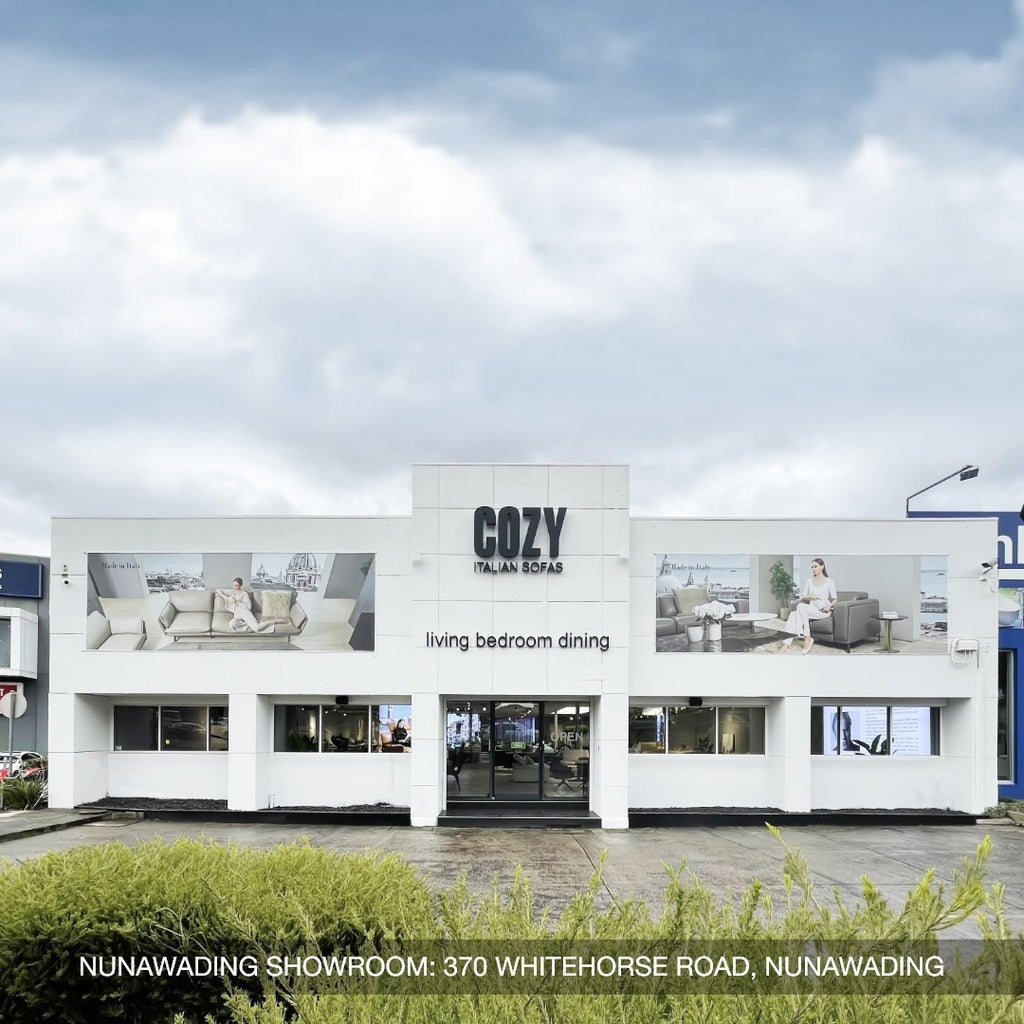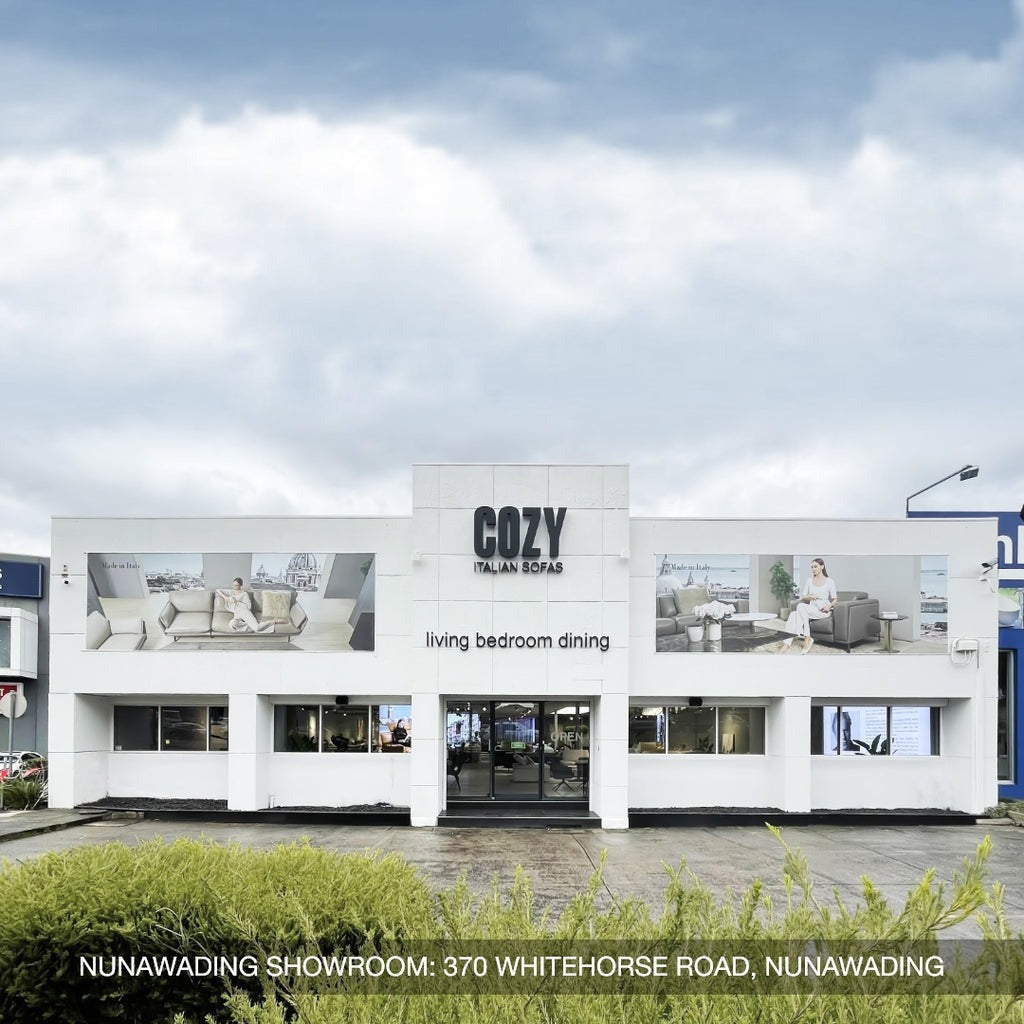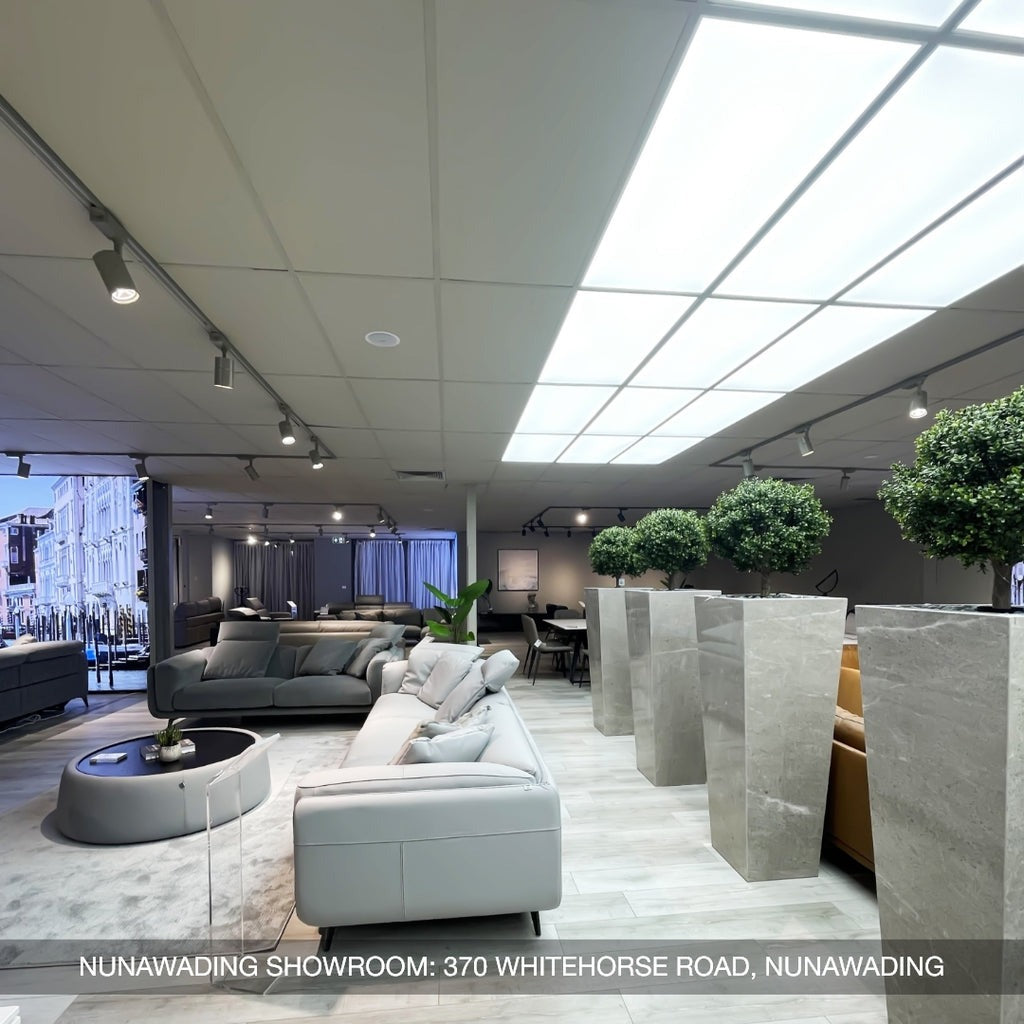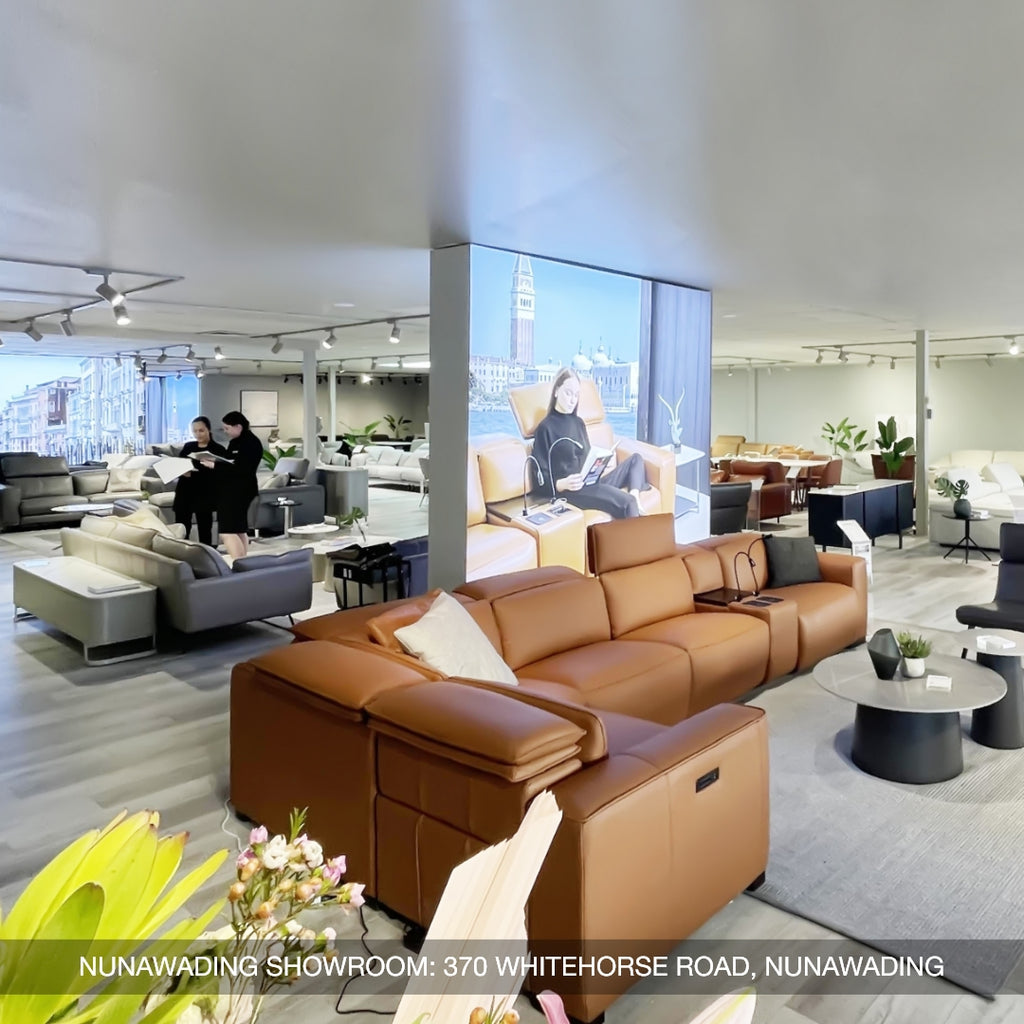One of the most effective strategies is zoning an open-plan space to define different areas while maintaining a seamless flow. A key element in this approach is using furniture to create zones, ensuring each section serves its purpose without the need for walls. A neutral sofa is particularly useful in this setup, offering versatility and cohesion in design. With its soft, adaptable tones, it helps establish balance, making open-plan living with a neutral sofa both practical and aesthetically pleasing. This method enhances comfort, organization, and visual harmony.
1. Position the Sofa to Guide Flow
Float the sofa away from walls to create natural walkways and prevent a "wall-hugging" look. Leaving 30–50 cm of space behind the sofa improves circulation, making movement smoother while contributing to a well-balanced open plan living room layout. Studies show that furniture placed at a slight distance from walls can make a space feel more inviting and spacious.
Face the sofa toward a focal point to visually anchor the living zone. Whether it’s a fireplace, TV, or large windows, this positioning helps establish a sense of purpose in the room. In L-shaped layouts, angling the sofa toward adjacent areas enhances connectivity while maintaining distinct zones. Interior design experts suggest that a focal point naturally draws attention and reduces visual clutter in multi-functional living room design.
Use an L-shaped or modular sofa to subtly divide the space without the need for partitions. Placing the chaise or extended section parallel to a kitchen island or dining table allows for seamless zoning, reinforcing an intuitive flow. Modular sofas are particularly beneficial in open concept living room design, as they can be reconfigured based on needs, maximizing flexibility.
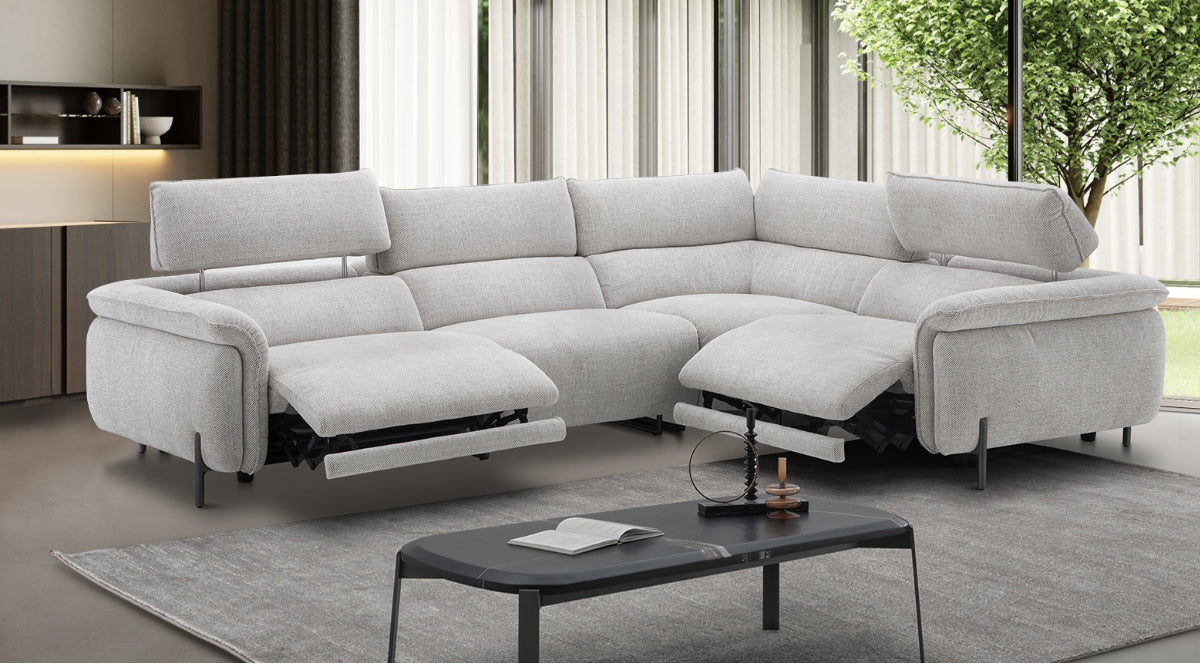
For a stronger visual anchor, face the sofa toward a focal point such as a fireplace, TV, or large windows.
2. Layer Rugs for Visual Boundaries
Place a large rug under the sofa and coffee table to ground the living area and create a defined seating zone. A jute rug or geometric print design adds texture and contrast, enhancing the neutrality of the sofa while subtly marking boundaries. Research indicates that layering rugs in open-plan spaces can increase visual warmth and reduce acoustic echo, making the environment feel more intimate.
Ensure the rug extends at least 15 - 30 cm beyond the sofa’s edges to fully enclose the zone. This method enhances spatial definition, ensuring that the living space remains distinct from adjacent dining or kitchen areas. You should put a rug size proportional to the seating arrangement for a well-balanced aesthetic.
3. Add Lighting to Highlight Zones
Cluster table lamps or floor lamps around the sofa to establish a cozy, self-contained living area. Warm, dimmable bulbs create an inviting ambiance while reinforcing the living room’s primary function. According to feng shui principles for living room layout, soft lighting encourages relaxation and balance, making the space feel harmonious.
Hang pendant lights above adjacent zones, such as the dining area, to clearly differentiate them from the sofa zone. Proper lighting placement in open plan living with neutral sofa enhances zoning without disrupting the overall flow. Layered lighting improves both aesthetics and functionality, offering flexibility in mood and activity-based illumination.

In open plan living with neutral sofa, well-placed lighting enhances zoning while maintaining an airy feel.
4. Use Texture and Accents for Depth
Layer throw pillows and blankets in earthy tones, linen, or wool to introduce warmth and contrast against a neutral sofa. Textured accents add depth, preventing a monochromatic look. Studies suggest that incorporating soft textiles enhances comfort and makes a space feel more inviting. Interior design trends also show a rise in natural materials, such as boucle and organic cotton, to create a tactile, cozy environment.
Incorporate a console table or shelf behind the sofa to display decor, plants, or books. This not only adds vertical interest but also acts as a subtle divider between zones. According to creative room division techniques, open shelving works particularly well in maintaining light flow while providing necessary storage. A neutral sofa paired with a structured console balances aesthetics and function, reinforcing defining areas in open plan living without disrupting openness.
5. Balance Openness with Strategic Furniture
Pair the sofa with a storage ottoman or modular footstool that serves multiple functions, acting as a coffee table, extra seating, or hidden storage. This approach aligns with seamless furniture arrangement in open spaces, ensuring flexibility while reducing clutter. Adaptable pieces improve spatial efficiency in modern homes, supporting both minimalism and functionality.
Add a low-backed armchair (e.g., mid-century design) next to the sofa to extend the seating area without obstructing sightlines. Unlike bulky sectionals, a sleek armchair maintains openness while defining the living space. Mixing different furniture styles, such as combining a contemporary neutral sofa with a vintage accent chair, adds personality and aligns with the latest living room design trends. This balance between modern and classic elements prevents the space from feeling overly uniform.

To extend the seating area without overwhelming the space, place a low-backed armchair (such as a mid-century design) next to the sofa.
6. Harmonize with Adjacent Zones
Repeat neutral tones from the sofa in other zones (e.g., dining chairs, kitchen cabinets) to ensure visual continuity. This technique reinforces defining areas in open plan living while preventing abrupt transitions. Research on interior color psychology suggests that a cohesive palette improves spatial perception, making open spaces feel more connected. Complementing a neutral sofa with soft beige, taupe, or light grey elements throughout the home enhances the sense of unity.
Transition flooring materials between zones (e.g., hardwood in the living area, tile in the kitchen) to create natural separation. This follows creative room division techniques, subtly marking boundaries without requiring walls. According to the latest living room design trends, designers increasingly use flooring contrasts to reinforce zoning in open spaces. A wood-to-tile transition, for instance, differentiates activity areas while maintaining an elegant, cohesive aesthetic.
Creating a well-structured open plan living with neutral sofa enhances both functionality and style. A high-quality sofa plays a central role in achieving this balance, offering both comfort and versatility. At COZY, we provide premium sofas designed to complement open-plan spaces, ensuring durability and timeless elegance. Explore our collection to find the perfect piece that elevates your home’s design while supporting effortless zoning. Visit COZY today and transform your open-plan living area with expert craftsmanship and style.


